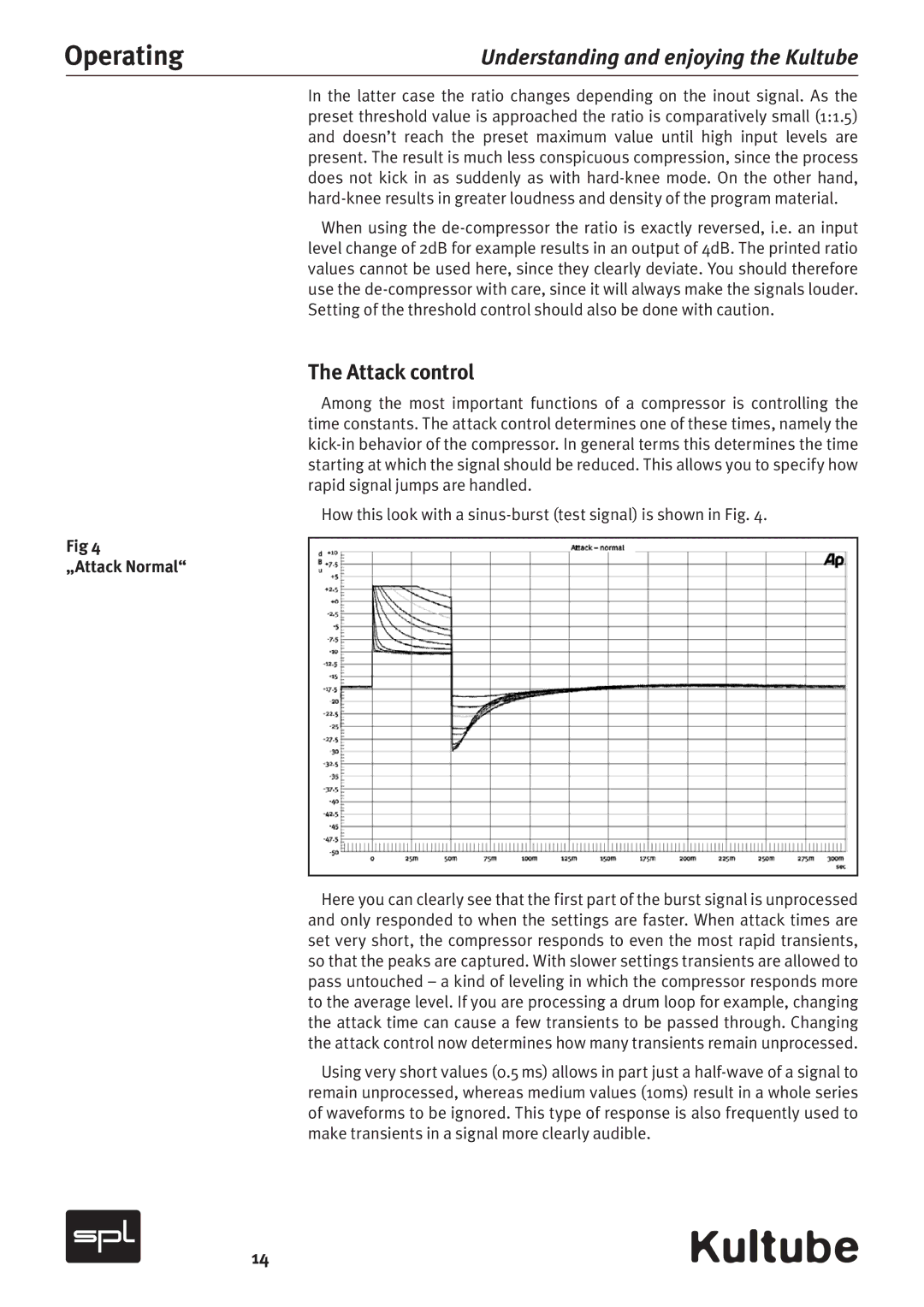
Operating | Understanding and enjoying the Kultube | |
|
|
|
In the latter case the ratio changes depending on the in0ut signal. As the preset threshold value is approached the ratio is comparatively small (1:1.5) and doesn’t reach the preset maximum value until high input levels are present. The result is much less conspicuous compression, since the process does not kick in as suddenly as with
When using the
The Attack control
Among the most important functions of a compressor is controlling the time constants. The attack control determines one of these times, namely the
How this look with a
Fig 4
„Attack Normal“
Here you can clearly see that the first part of the burst signal is unprocessed and only responded to when the settings are faster. When attack times are set very short, the compressor responds to even the most rapid transients, so that the peaks are captured. With slower settings transients are allowed to pass untouched – a kind of leveling in which the compressor responds more to the average level. If you are processing a drum loop for example, changing the attack time can cause a few transients to be passed through. Changing the attack control now determines how many transients remain unprocessed.
Using very short values (0.5 ms) allows in part just a
14
